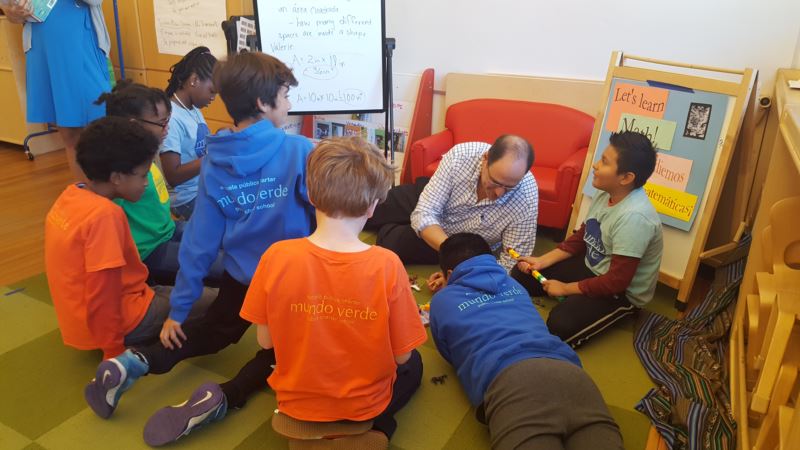It's a typical situation. A mother has to run an errand and leaves a note for her kids telling them to help themselves to lunch. There are eggs in the refrigerator, it says; but, some are hard-boiled and others are raw…and they look the same. How can the kids tell which is which without cracking them open? The students in the fifth grade science class at Mundo Verde Bilingual Public Charter School in Washington, D.C. have to think scientifically to solve the mystery. Samadhi says she had to try more than one idea to differentiate between the eggs. “It was kind of difficult, but it was fun too,” she explains. “You get to do things yourself. You need to try new things, you don’t have to do what the teacher tells you. You get to try stuff that you think might work for what you’re doing.” Samadhi discovered that spinning the eggs solved the mystery. Raw eggs spin more slowly than hard-boiled ones because the liquid inside slows them down. Think, solve and learn This puzzler – The Eggcellent Idea – is one of 65 in the "One Minute Mysteries” educational series. Each mystery take a minute and half to read and requires students to solve it using their math and science knowledge. Mundo Verde teacher Karen Geating Rivera notes that the series was created by Eric and Natalie Yoder, a father-daughter pair. “And when they were first written, the daughter was still a middle schooler. So it’s not just written for children, but it was actually written in part by the child herself." “Every single mystery is written with characters that are children, and children that are facing real world situation that they need to solve using their background knowledge on math and science,” she explains. “So they’re not expected to have a bunch of formulas in their head that they already know. It's just things that happen every day and that you just think from a scientific or mathematical perspective to resolve.” WATCH: Video report on project Science teacher David Levin says the mysteries get the children excited. “If they enjoy what they’re doing, they will learn. That’s my philosophy. I like having the opportunity of having them in small groups, sharing their ideas, feeling the experiment in their hands.” Kids have also to discuss the facts among each other before declaring the answer. Ten-year-old Dante finds these group discussions useful. “You might come to an agreement,” he says. “You might come to disagreement. But sometimes once you share your opinions, you can find out which one is the right response and which one isn’t.” Creating learning opportunities The latest addition to the series is bilingual: English and Spanish. The authors are trying to provide a resource for dual-language education, which is a growing trend in many schools around the country, including Mundo Verde. School instructional guide, Berenice Pernalete says having bilingual instructions helps the students who come from different backgrounds. “I think that for a language immersion school, one of the things that teachers do in order to foster engagement in students and to be really creative is that they have shared experiences.” Teacher Karen Geating Rivera says bringing the mysteries into the classroom allows her students to develop several skills at the same time, and learn from each other. “The kids who don’t speak Spanish at home, and who are learning Spanish as a second or maybe a third language are able to hear the native speakers in a natural, authentic setting and start picking up some of that language and vice versa,” she says. “The fact that they are leaving the classroom still talking about what we’ve done tells me that I really made it an authentic experience, something that they can walk out and continue using in real life.” The "One Minute Mysteries" series, she says, is another tool to keep her students engaged and foster their math, science and bilingual skills.
Kids Use Math, Science Skills to Solve One-Minute Mysteries






